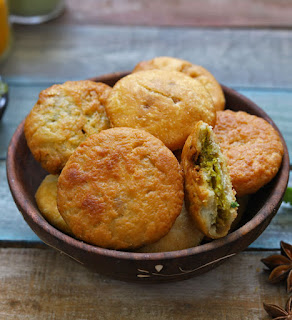Food trends of the week
Following food trends is very important for our day as we
fashion trends. It’s amazing and exciting like other trends. The trend of food
is widespread changes in food preferences. With the restaurants
being shut and everyone inside the four walls are emerging as chefs with their
creativity in cooking. As we all know the food trend for last few months was
chaat and i’m sure you guys have tried. Now, its time to look into what’s
trending now in the food world.
KACHORI
Kachori is a spicy deep-fried snack,
originating from the Indian subcontinent, and common in places with Indian diaspora and other South Asian diaspora. Alternative names for the snack include kachauri, kachodi and katchuri.
Kachori is
supposed to have originated in Uttar Pradesh, India. In these states it is usually a
round flattened ball made of fine flour filled with a stuffing of baked mixture
of yellow moong dal or urad
dal (crushed
and washed horse beans), besan (crushed and washed gram flour), black pepper, red chili powder, salt and
other spices.
Additionally
in Rajasthani cuisine, kota Kachori is probably
the most famous kachori in the state. The use of hing gives
it an authentic taste of rajasthan, calling it the most famous rajsthani snack
won't be wrong, it's a signature snack of rajasthan. The Pyaaj Kachori (onion
kachori) is also very popular. Another form of Kachori in Jodhpur is the Mawa Kachori, invented by the late Rawat Deora.
It is a sweet dish dipped in sugar syrup.
GHUGNI
Ghugni is an evening snack,
native to the Indian
subcontinent, especially popular
in Eastern india (Indian state of Jharkhand bihar, Odisha,West
bengal), Northeast india (Indian states of assam and tripura), and in parts
of the nation of Bangladesh. Black gram (kala chana), dried Yellow peas, or dried white
peas are cooked with gravy in the traditional eastern Indian style. It is
then served with puffed rice (kurmura) and at
times with hot onion pakora or bhajiya. It is also served with poori.
SAMOSA
A samosa is a
fried or baked pastry with a savoury filling, such as
spiced potatoes, onions, peas, cheese. It may take different forms, including
triangular, cone, or half-moon shapes, depending on the region. The Indian
style, often accompanied by a chutney, is probably the
most widely known of a broad family of recipes from Africa to China, which have
origins in medieval times or earlier. Samosas are a popular entree,
appetizer, or snack in the local cuisines of South Asia, Western Asia,
Southeast Asia, the Mediterranean, and Africa. Due to emigration and cultural diffusion from these areas, samosas today are
often prepared in other regions.
VEGETABLE JUICE
Vegetable juice is a juice drink made primarily of
blended vegetables and also available in the form of powders. Vegetable
juice is often mixed with fruits such as apples or grapes to improve
flavor. It is often touted as a low-sugar alternative to fruit
juice,
although some commercial brands of vegetable juices use fruit juices as
sweeteners, and may contain large amounts of sodium.
Making vegetable juice at home is an
alternative to buying commercial juices, and may augment diets low in
vegetables and fruits. The juicer separates juice from pulp fibers. Masticating
juicers employ a
slow-geared grinding mechanism. A cheaper and faster alternative uses centrifugal force to achieve separation. The slower speed of the
masticating process is held to protect the vegetables from oxidation and heat (from friction),
reducing nutrient breakdown. Advocates of masticating juicers often cite the
preservation of enzymes, though these are rarely specified and the claims are
unsubstantiated by a body of academic support. Juicing the fine leaves of wheatgrass usually
requires a masticating process. Vegetables juice are something you
will always get in people’s diet. From celebrities to common people everyone
has tried to include this in their diet plan.



Comments
Post a Comment